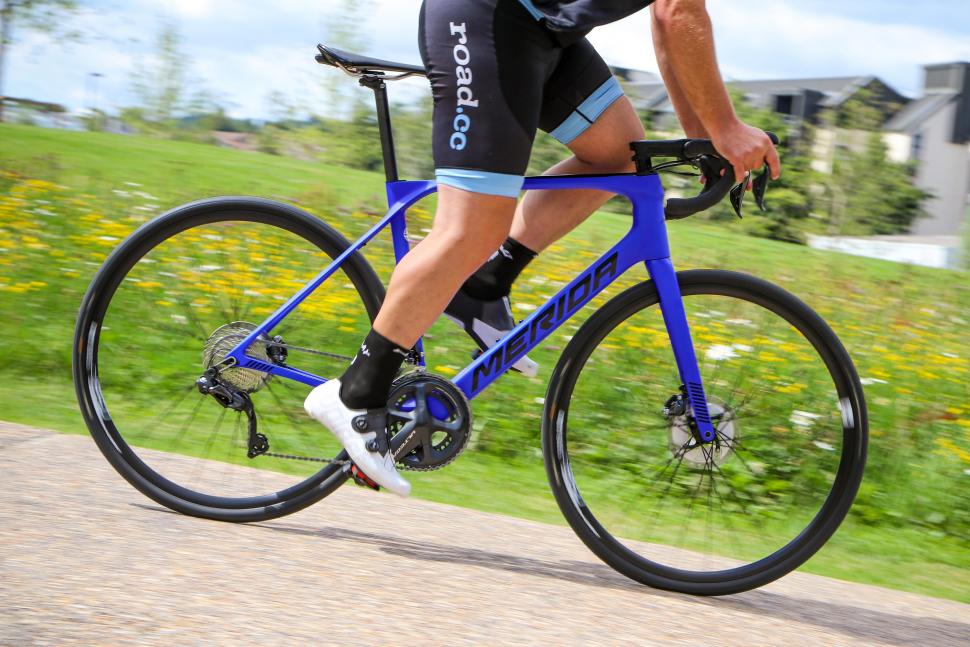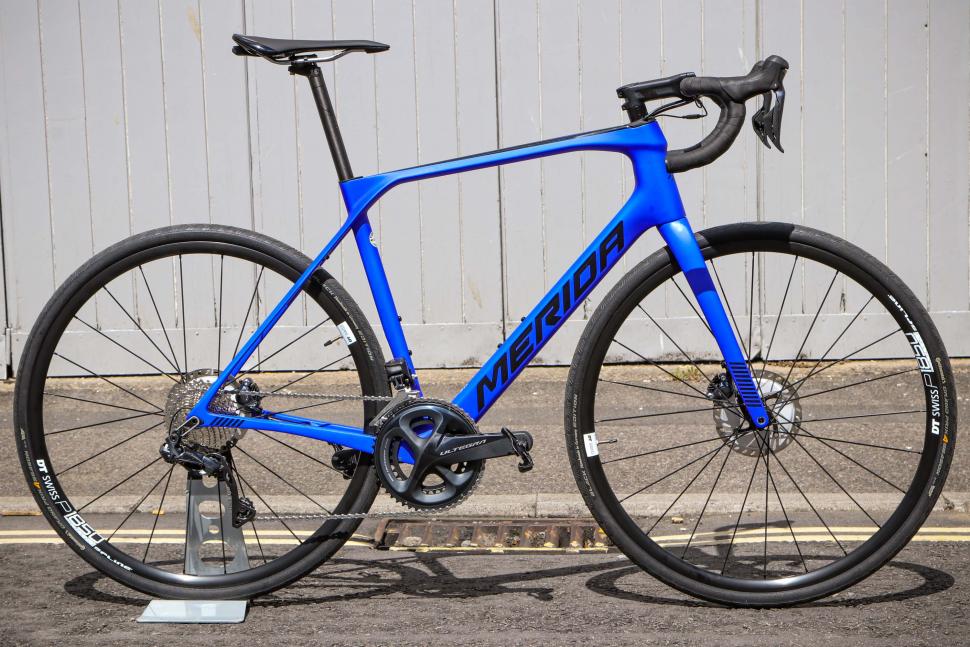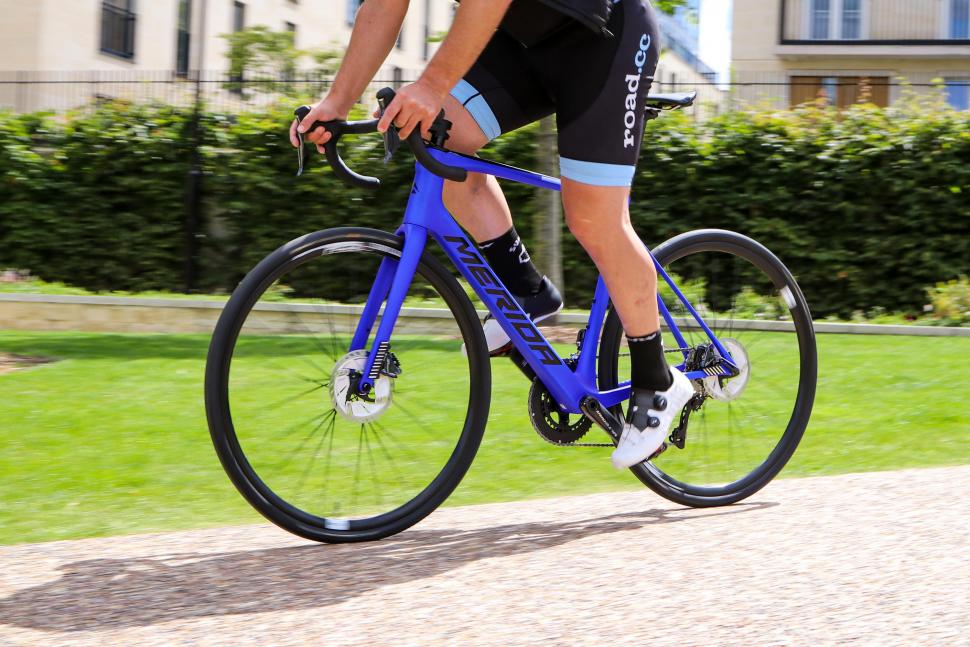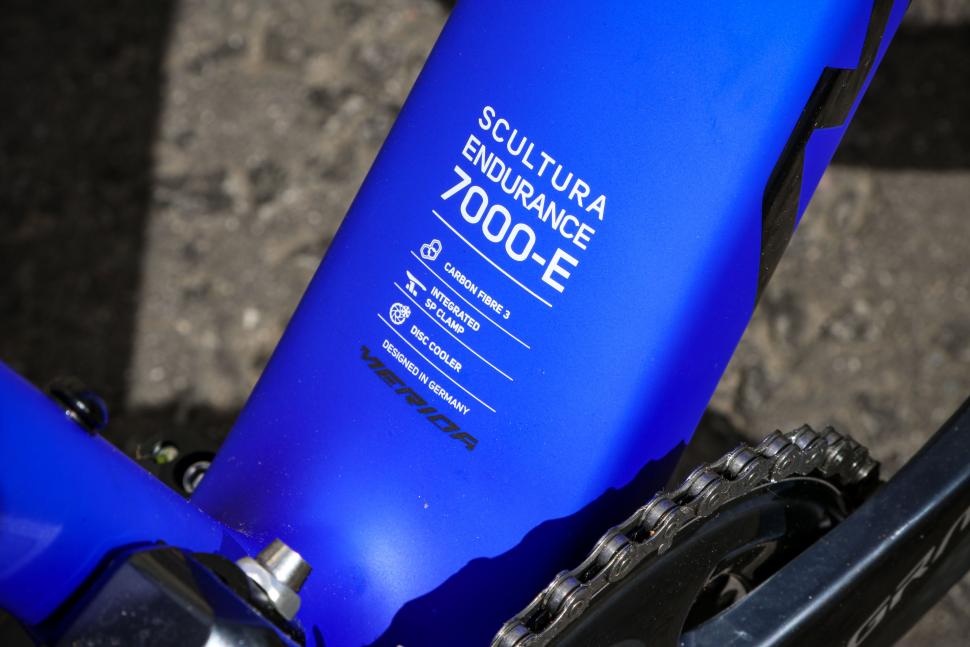- News
- Reviews
- Bikes
- Accessories
- Accessories - misc
- Computer mounts
- Bags
- Bar ends
- Bike bags & cases
- Bottle cages
- Bottles
- Cameras
- Car racks
- Child seats
- Computers
- Glasses
- GPS units
- Helmets
- Lights - front
- Lights - rear
- Lights - sets
- Locks
- Mirrors
- Mudguards
- Racks
- Pumps & CO2 inflators
- Puncture kits
- Reflectives
- Smart watches
- Stands and racks
- Trailers
- Clothing
- Components
- Bar tape & grips
- Bottom brackets
- Brake & gear cables
- Brake & STI levers
- Brake pads & spares
- Brakes
- Cassettes & freewheels
- Chains
- Chainsets & chainrings
- Derailleurs - front
- Derailleurs - rear
- Forks
- Gear levers & shifters
- Groupsets
- Handlebars & extensions
- Headsets
- Hubs
- Inner tubes
- Pedals
- Quick releases & skewers
- Saddles
- Seatposts
- Stems
- Wheels
- Tyres
- Health, fitness and nutrition
- Tools and workshop
- Miscellaneous
- Tubeless valves
- Buyers Guides
- Features
- Forum
- Recommends
- Podcast
TECH NEWS
 2020 Merida Scultura Endurance 7000E - riding 4.jpg
2020 Merida Scultura Endurance 7000E - riding 4.jpgFirst Ride Review: Merida Scultura Endurance 7000-E
Merida have launched a brand new road range, the Scultura Endurance, which sits between their gravel and road race bike lineups, and I’ve been lucky enough to spend some time getting to know the top-end 7000-E (£3,500) option. I've not had long enough in the saddle to write a full review, but after a couple of jaunts out into the countryside I’m going to share with you my initial thoughts on how the Merida rides.
You may be thinking, "Hang on a minute, the Scultura has been around for years!"
True, but in the guise of the high performance, lightweight machine in Merida’s road race lineup. The Scultura Endurance range is more focused on long distance comfort thanks to larger tyre clearances and a more relaxed geometry.
Read our review of last year's Merida Scultura Disc 200
For the full lowdown head over to Mat’s story on the new Merida Scultura Endurance range including geometry tables, frame design and pricing.
As I said, I haven’t had the 7000-E for a huge amount of time, and the longest ride I have managed so far is just over 100km, but one thing that is already coming through is just how comfortable this bike is, not just from the compliance in the frame or the volume of the factory fitted 32mm tyres, but in the way the geometry works. The position I can achieve just feels absolutely spot on, and that accounts for a lot when you are in the saddle for plenty of hours.
The medium model here has 553mm effective top tube, 176.5mm head tube length and a wheelbase of 1,001mm. You get a relaxed riding position, but with a racy balance. Make sense? It's still a road bike setup, but dialled back from the position you'd get on Merida's Reacto, for example, or the non-Endurance version of the Scultura.
Early signs are that the handling is quick enough to still be fun at high speed, but the rest of the angles and measurements give the Scultura Endurance a really balanced and sure-footed feel. On a bike that’s designed for big rides where fatigue could be an issue, these are the type of characteristics you want to see.
This 7000-E model comes with a Shimano Ultegra Di2 electronic groupset, DT Swiss alloy wheels and a smattering of Merida finishing kit, producing a bike that weighs 8.58kg (18.9lb). It feels light enough when you hit the hills, your upward progress helped by the fact that you get a compact 50/34T chainset and an 11-34T cassette, offering a large spread of gears.
The geometry and the extra teeth on the largest sprockets means that the majority of climbing can easily be dealt with from the saddle. When I did stand up I found plenty of frame stiffness on offer through the bottom bracket shell and lower half of the frame generally.
Right then, that’s all I have for now. Brief, I know, but my time on this bike has been limited. What I would say is that it’s all looking pretty positive, so stay tuned for the full review in a few weeks’ time after the 7000-E and I have become even better acquainted.
Get more info over at www.merida-bikes.com
Since writing his first bike review for road.cc back in early 2009 senior product reviewer Stu has tested more than a thousand pieces of kit, and hundreds of bikes.
With an HND in mechanical engineering and previous roles as a CNC programmer/machinist, draughtsman and development engineer (working in new product design) Stu understands what it takes to bring a product to market. A mix of that knowledge combined with his love of road and gravel cycling puts him in the ideal position to put the latest kit through its paces.
He first made the switch to road cycling in 1999, primarily for fitness, but it didn’t take long for his competitive side to take over which led to around ten years as a time triallist and some pretty decent results. These days though riding is more about escapism, keeping the weight off and just enjoying the fact that he gets to ride the latest technology as part of his day job.




Not just the lack of a portal. The fact that many polis are totally apathetic when you go to the station and that the Fiscal won't even progress...
Fixed.
And the cheese? Not being funny - but it is! Plus we've got more than enough enough wind turbines thank you....
The Garmin Varia RTL515 is down to £115-120 at most places now, for the extra ~£20 I think I'd take that instead over the Magene L508 for the...
Which we haven't received- so I repeat: an attempted deception
It doesn't help that most of these e-bikes are actually classed as motor vehicles and are ridden illegally in UK.
I've been riding 170s on the road and 165s on the track for 30 years. I've always loved 165s. I'm 1m 84, with short legs and a long back.
I plan to watch *everything* up until 28th February, then delete the app from my devices and smart TVs, and then delete my account....
Lovely!
That is a shame - I have had numerous bits of kit from them over the last few years - all of it excellent quality, and even if the quality was ...